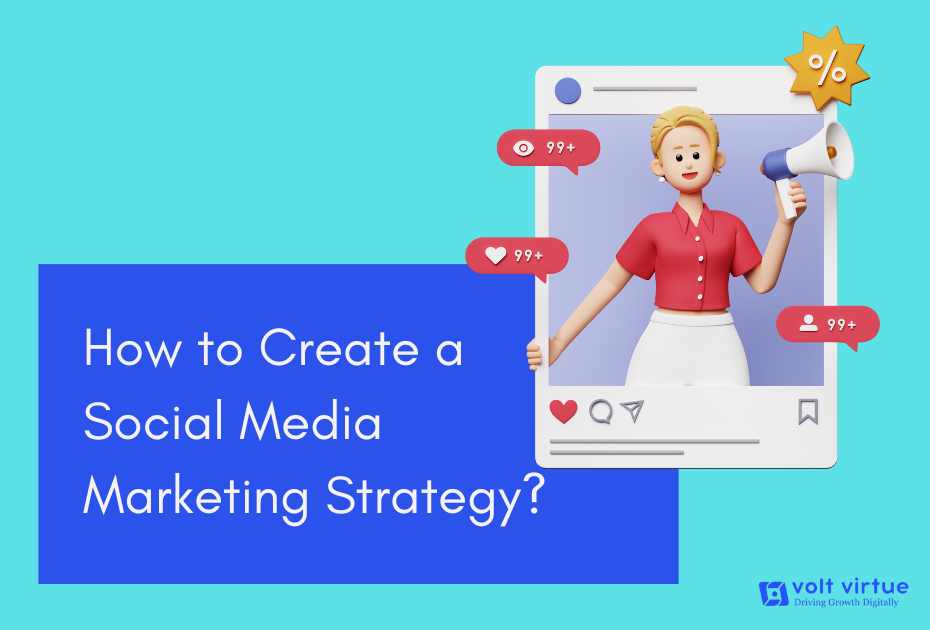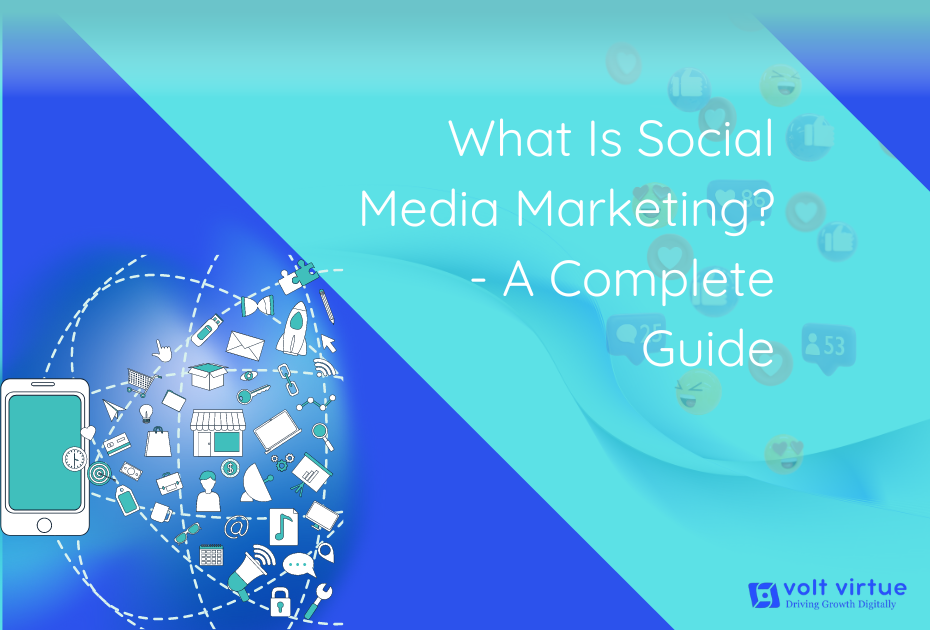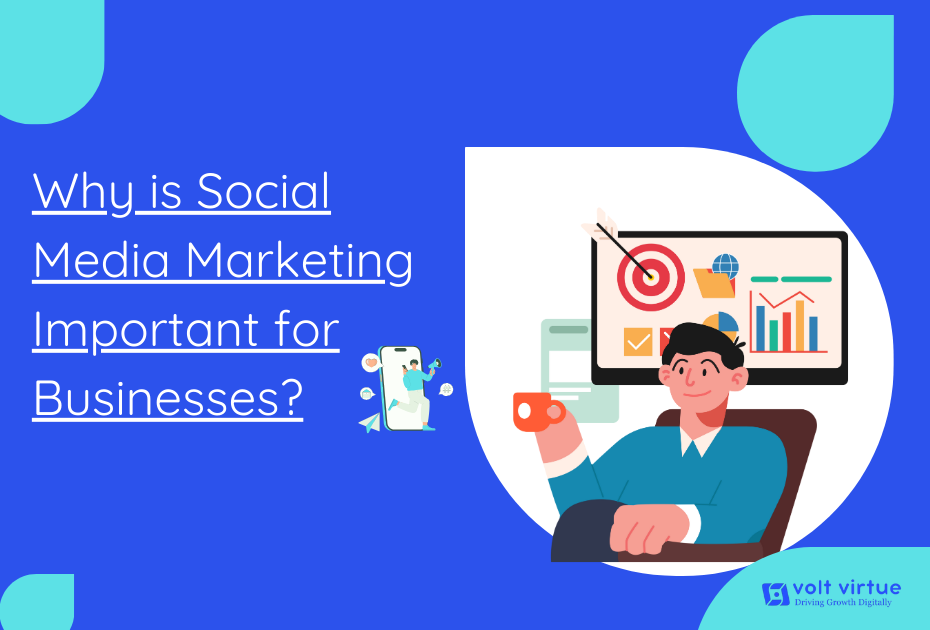
Looking to create your social media marketing strategy? It would be ideal to accomplish it now. With increasing competition, a growing variety of content, and numerous platforms, a clear strategy helps you focus and confidently decline efforts that don’t align with your goals.
That’s why we’ve created a comprehensive guide to building a social media marketing plan from scratch.
What is Social Media Marketing?
Using social media platforms to connect with your target audience and establish your brand is known as social media marketing. It’s more than just posting randomly on your business accounts—it requires a well-thought-out strategy and careful planning.
Once your business profiles are set up, the next step is to maintain and optimize them. You’ll need a content calendar that outlines what, when, and where you’ll post. Usually, your postings will include a variety of text, photos, videos, and stories that are all intended to engage your target audience and positively showcase your brand.
In addition to creating unique, consistent content, you’ll also interact with your audience by responding to comments, likes, and shares. This helps monitor your online reputation and fosters community engagement. Depending on your budget and goals,
Social media marketing may also involve paid ads, which ensure your brand reaches the right people at the right moments.
What is a Social Media Marketing Strategy?
A social media marketing strategy is a comprehensive plan that aligns your social media efforts with your team’s goals and broader business objectives. This alignment guarantees that your efforts are performance-optimized and yield quantifiable outcomes that support your overall marketing success.
A well-defined strategy also sets clear boundaries around your team’s time and expertise. Social media is a unique channel, and while almost everyone uses it, this widespread familiarity often leads to an overestimation of one’s expertise.
Why you Need a Social Media Marketing Strategy?
Planning your social media campaigns in advance helps you save time and maintain a strong, consistent digital presence across all channels.
By identifying your business objectives, social media goals, and target audience, you can create content that drives positive results.
Using social media strategically will enable you to:
- Increase brand awareness and reach new audiences across platforms
- Build customer loyalty
- Offer proactive customer support
- Generate inquiries and convert leads into sales
Making the most of your social media marketing endeavors requires a solid approach.
How to Create a Social Media Marketing Strategy?
Now that you understand what makes a strong social media marketing strategy, you may be wondering how to create one. By following these steps and leveraging the resources available to you, you’ll set your business and brand up for social media success.
Step 1: Set Goals
Before engaging with social media, it’s important to clarify your goals and objectives. This step is particularly crucial if your business is new or has only been active on social media for a short time; in these cases, setting realistic goals that align with your current stage is key.
For example, if your primary goal is to increase engagement within your existing audience, it may be more effective to focus on platforms where your community is already active, like Facebook or Twitter, rather than launching on new platforms like Instagram or Snapchat. This goal might require an emphasis on consistent content creation—such as posting daily images—rather than expanding to new channels right away.
Your content should reflect your brand identity and audience preferences, but don’t feel pressured to create specific types of posts for each platform. A mix of images, videos, and text posts can work well—sometimes a simple image post is all you need!
Finally, keep both long-term and short-term goals in mind, balancing personal brand growth with business growth. This approach will help you create a plan that supports each aspect of your online presence.
Step 2: Research and Understand your Target Audience
Understanding your target audience is essential. Who are they? What do they like to see and are interested in? When are they most active on platforms like Instagram?
Conduct an in-depth analysis of audience characteristics, including age, gender, location, interests, and behaviors. Use this information to create detailed buyer personas that reflect these traits. Segment these personas into groups to craft personalized content tailored to each audience segment.
Connect effortlessly with your ideal audience—whether they’re potential leads who have visited your website, returning customers, or prospects interested in your brand’s offerings. With layered targeting, you can precisely contact your audience. Your advertising can be tailored to target the right audience at the right moment based on factors like age, geography, hobbies, and online activity.
Step 3: Conduct a Competitive Analysis
A competitive analysis helps you understand who your competitors are and what they’re doing well (or not so well). This will give you a clear idea of industry standards, allowing you to set realistic social media targets. It can also reveal opportunities; for example, if a competitor excels on Facebook but has little presence on Twitter or Instagram, you might focus on engaging audiences on those underutilized platforms instead of competing directly.
Social listening is another valuable tool for keeping tabs on the competition. By monitoring your competitors’ accounts and relevant industry keywords, you can observe shifts in their strategies or spot specific posts or campaigns that perform well—or miss the mark. Use these insights to evaluate and refine your own goals and plans.
Step 4: Choose your Platforms
Not all social media platforms are created equal. The best platforms for your brand depend on factors like your target audience, industry, and specific goals. For instance, if you’re a B2B business aiming to connect with other businesses, LinkedIn is essential. But if you’re a clothing boutique targeting teenage girls, TikTok is a great choice. Remember, you can use multiple platforms—just be sure to post unique, relevant content tailored to each one.
Step 5: Create Unique and Engaging Content
With billions of social media users worldwide, it’s likely that some of your followers—or potential followers browsing your profile—have also seen content from your competitors or other businesses in your industry.
That’s why creating engaging, standout content is essential. Give viewers a reason to click “Follow” and interact with your brand. Engaging content not only captures attention but also works with social media algorithms, which are more likely to prioritize your posts if users show interest. As you can when you play out social media platforms, you will see content from only a few regularly because they consistently post engaging material that you interact with. The algorithm learns preferences and prioritizes their posts, so you rarely see content from other brands unless you have scrolled to the bottom of your feed or exhausted all stories.
Step 6: Organize a Posting Schedule
Using a social media management tool is one of the simplest ways to keep your content on track. These tools allow you to draft captions, prepare images and videos, and schedule posts in advance. Some even automate the posting process and provide insights on post interactions and engagement. You can use social media content calendar tools to post your content automatically on the platform. They were all incredibly user-friendly, and the time-saving benefits make them a worthwhile investment for any social media marketer looking to streamline their workflow.
Step 7: Engage with your Audience
Social media is a two-way street. Creating valuable content is essential, but equally important is engaging with your audience by responding promptly to comments, messages, and mentions.
For example, when followers ask questions or leave comments on your posts, aim to respond within 24 hours. This demonstrates that you respect their opinions and are interested in their issues.
By actively engaging, you can foster a sense of community around your brand. Additionally, social media algorithms on platforms like Facebook, Instagram, and YouTube reward user engagement. Providing informative content and engaging consistently increases your content’s reach and strengthens brand awareness.
Step 8: Test, Evaluate, and Adjust your Strategy
Your social media marketing strategy is vital for your business, but it’s unlikely to be perfect right from the start.
As you implement your plan and track results, you’ll likely find that some strategies perform better than expected, while others may need refinement.
Track your Data
Use each social network’s analytics tools along to monitor how visitors navigate through your website. This approach helps you pinpoint which social posts drive the most traffic.
Re-Evaluate, Test, and Refine
As data rolls in, use it to regularly reevaluate your strategy. Experiment with different posts, campaigns, and tactics to understand what works best. Ongoing testing allows you to fine-tune your strategy in real time.
Surveys are another valuable tool—ask your social media followers, email list, and website visitors if your content meets their needs and expectations. You can even inquire about what they’d like to see more of, then make adjustments based on their feedback.
Adapt to Change
Social media is constantly evolving. New platforms emerge, demographics shift, and your business will likely experience changes, too. This makes it essential to treat your social media strategy as a living document. Review it regularly and adjust as needed to reflect new goals, tools, or trends.
When you update your strategy, make sure everyone on your social team is informed so they can work together to maximize your social media success.
Conclusion
These proven social media marketing strategies serve as your roadmap to success in today’s fast-evolving digital landscape. From setting clear objectives to staying adaptable, these strategies are essential for achieving your business goals.
By following this structured approach, businesses can make the most of social media platforms to meet their marketing objectives.
With these effective strategies, you can deepen your marketing expertise, refine your approach, and drive higher conversions and sales.
Frequently Asked Questions About How to Create a Social Media Marketing Strategy
In My Strategy, Which Social Media Platforms Should I Focus on First?
Pay attention to the social media sites where your target audience is most engaged. Consider the channels your competitors are using heavily, and choose platforms that align well with the type of content you plan to share.
Which Content Types are Appropriate for My Social Media Strategy?
Your social media strategy should incorporate a mix of content types, such as images, videos, text posts, infographics, testimonials, contests, interactive elements like polls, and user-generated content. Tracking which types resonate best with your audience will help you continuously improve your approach.
What are the Key Elements of a Successful Social Media Strategy?
A successful social media strategy includes clear goals, a deep understanding of your target audience, and a well-crafted content plan. Boost your strategy’s effectiveness by conducting competitor analysis, researching your audience, and selecting the most relevant platforms for your brand.
How Can I Evaluate the Success of My Social Media Marketing Strategy?
Regularly review the analytics on each platform you use, or leverage a tool that consolidates your data. Focus on tracking key metrics aligned with your goals, such as reach, conversions, click-through rates, and engagement levels.


